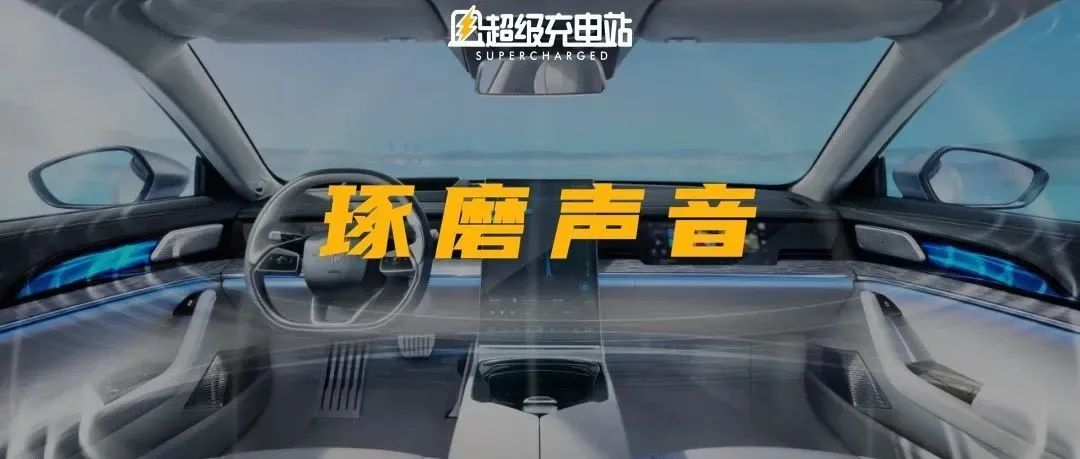Author: An Gongzi Xing Qinye Se
Every seat in a car is born unequal, from the “lowest level of importance” driver’s seat to the boss’s seat that everything revolves around, to the queen’s passenger seat for love. The difference between these seats is not only a matter of comfort, but even when it comes to safety, the largest gap between seats can reach 30%.
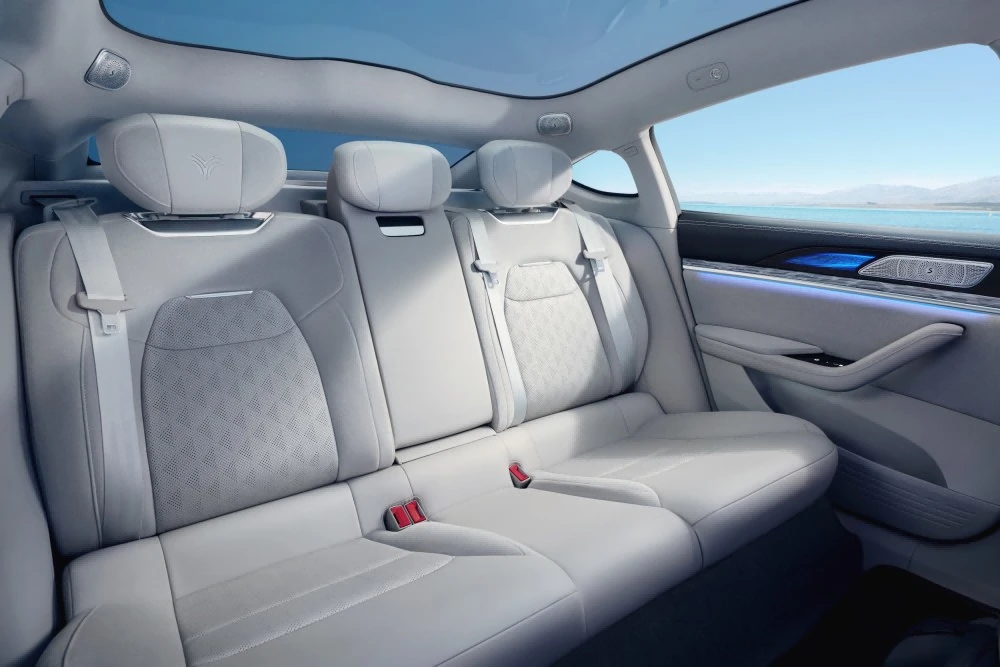
Any form of difference in human society is fundamentally based on “li”, which is why it is often said that “li dominates the difference”. Confucius talks about the “Ceremonies and Music Education”. Corresponding to the “differentiation” of “li” is the “harmony” of “music”.
If car seats are designed to treat everyone in the car differently, then car audio seems to want everyone in the car to have the same feeling, joy, and hear the same song no matter where they are in the car.
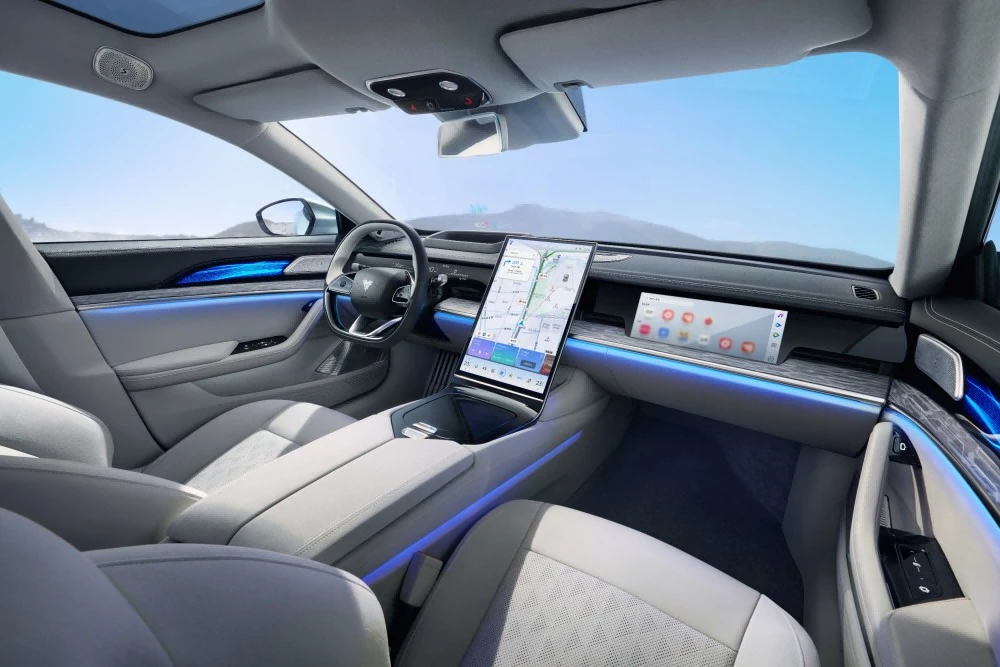
For more than a century, cars have been constantly changing with the help of technology. Gone are the clutch, ignition switch, and even the engine, but car audio, which appeared in 1930, has never been absent and has become increasingly important. Today, car audio not only serves purely as an entertainment amplifier but also carries the mission of handling NVH.
Therefore, on the track where new power brands are competing, in addition to the “old three” of range, autonomous driving, and smart cabin, the large screen, audio, and NVH have become the most fiercely contested battlefield this year.
NIO Automobile, which has emerged as a sales outlier this year, has made great efforts to ensure the stunning quality of NIO S, their flagship product. Instead of choosing a mainstream audio brand as a supplier, they worked closely with Goertek in the initial product design, and independently developed a tailored audio system.
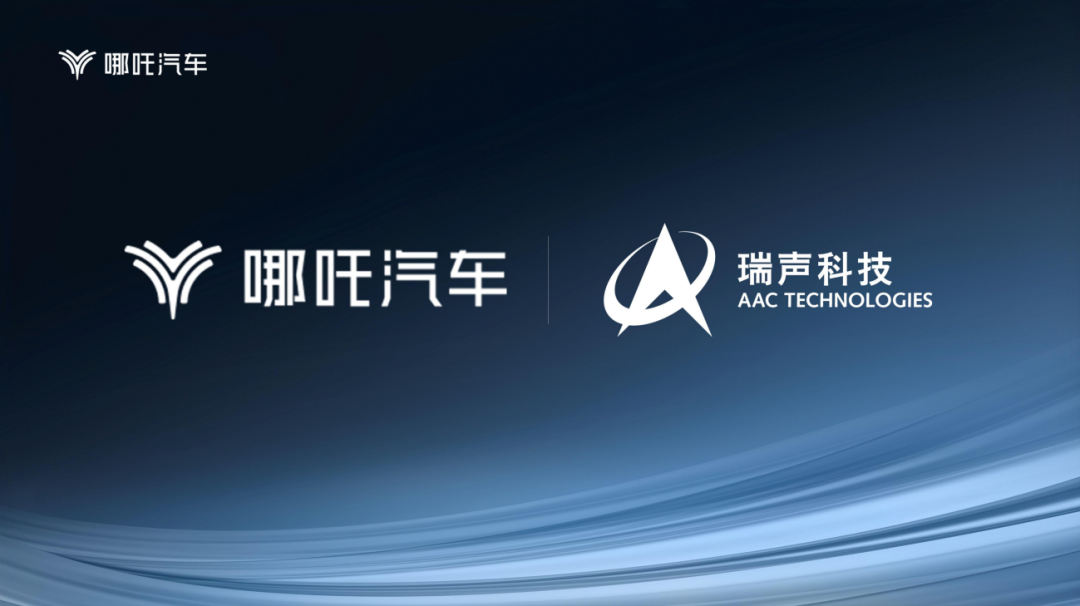 # Translation
# Translation
In “Analects of Confucius,” Confucius said that “a worker must first sharpen his tools if he is to do his work well,” emphasizing the importance of hardware. Having good partners, plans, and materials can often achieve twice the results with half the effort. This experience has been strictly followed in the production of good weapons and musical instruments in the Chinese civilization, which never advocates extravagance. In the opening sentence of “Li Ping’s Guqin Tune” by Li He, it reads “The wutong and shu bamboo produce fine sounds when played.” An excellent guqin requires the selection of wutong from Shu land and silk threads from Wu land. The RUI sound technology chosen by NIO ES8 is the “wutong and silk thread” of this sound system.
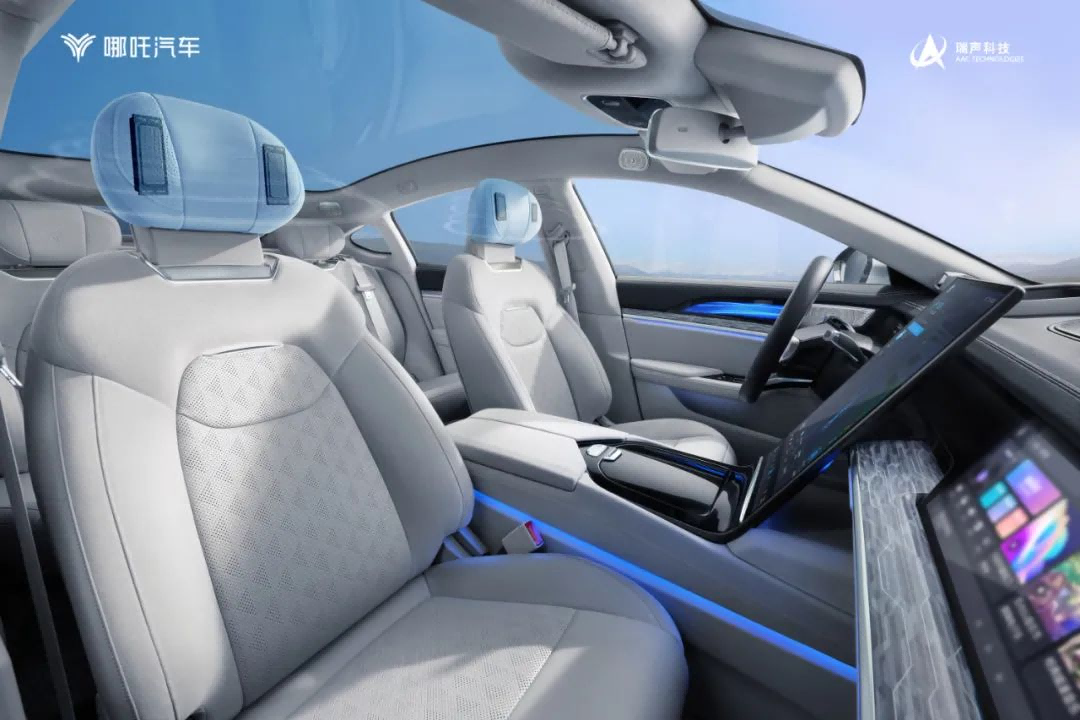
The speaker layout of the NIO ES8 audio system is equipped with a 21-speaker system, including center, door, overhead, headrest, and three woofers. The center and door positions utilize the world’s first 2-in-1 speaker assembly. Meanwhile, the overhead and headrest positions utilize full-range speaker assemblies. The door positions are fitted with subwoofers and woofers, and an independent 16-channel power amplifier is mounted in the cargo area.
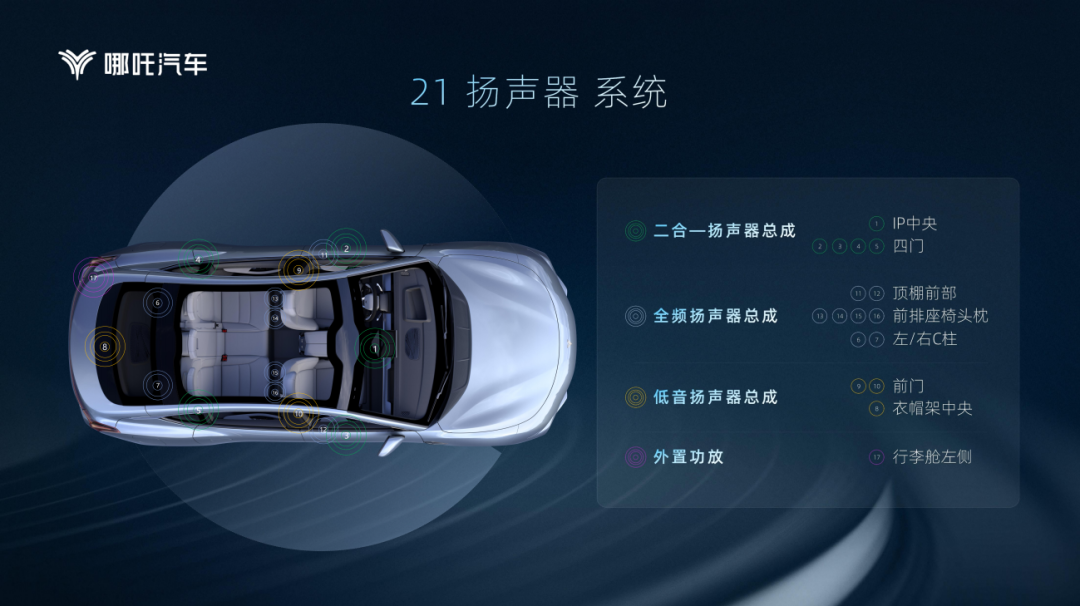
This system has the following features:
The first is the 720° NIO custom surround sound. Traditionally, cars do not have ceiling speakers, so the sound dimension can only be flat or front-rear-left-and-right with no vertical sound field. But this sound system’s ceiling speaker is specially optimized in terms of algorithms and can create a 720° custom surround sound for users.
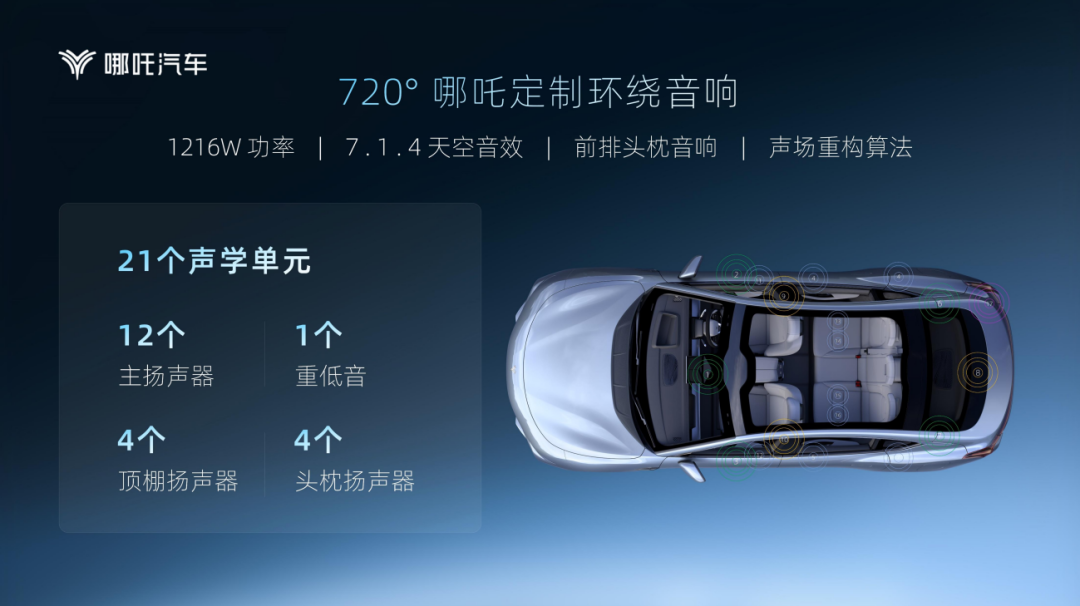
The second advantage is the modular design. The so-called speaker module is to add a separate speaker box behind the speaker. Traditional speakers do not have rear chambers or boxes, and they usually rely on the spaces in the door, trunk, or central console behind the car structure to maintain the rear chamber. The performance of the sound system is severely affected by the vehicle environment, including equipment environment, overall vehicle design environment, and interior environment, which is beyond the control of the manufacturing process and difficult to maintain consistency. As a result, product effectiveness, post-tuning, and user experience pose significant challenges.
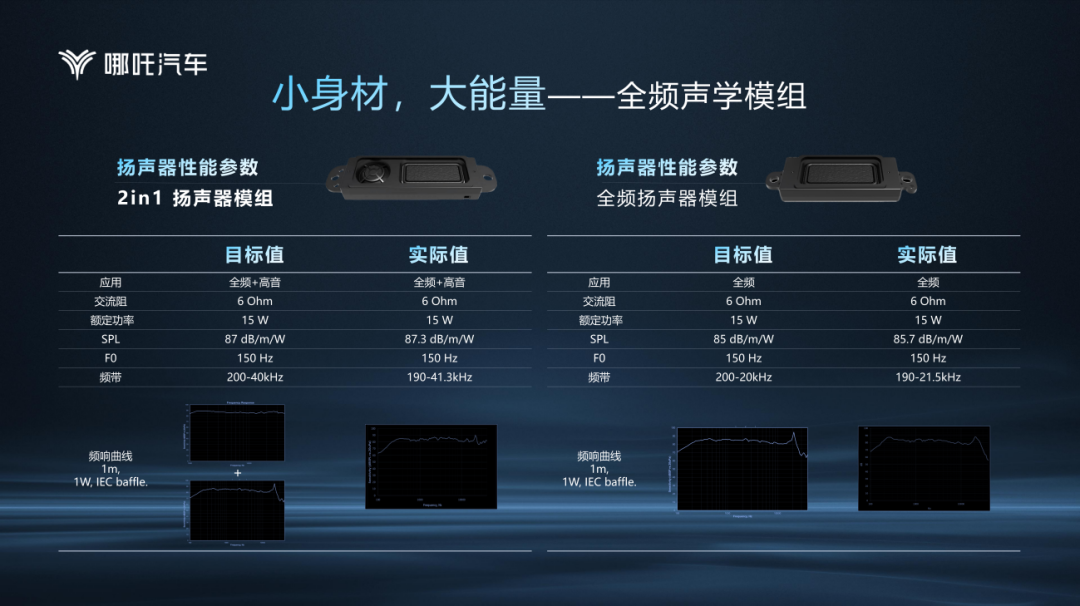 # NETA’s Sound System Innovation
# NETA’s Sound System Innovation
NETA has minimized the volume of the speaker and thus the volume of the rear cavity module, making their speakers a self-contained Box chamber. The benefit of the three-dimensional molded module is that it can adapt to more adverse situations, especially when the vehicle body is not well-sealed or the vehicle has irregular acoustic conditions, and perform well. Secondly, it can also adapt to some narrow installation situations, especially headrests and tops. The audio system of NETA S applies this technology when arranging the top and headrest, which can achieve better results.
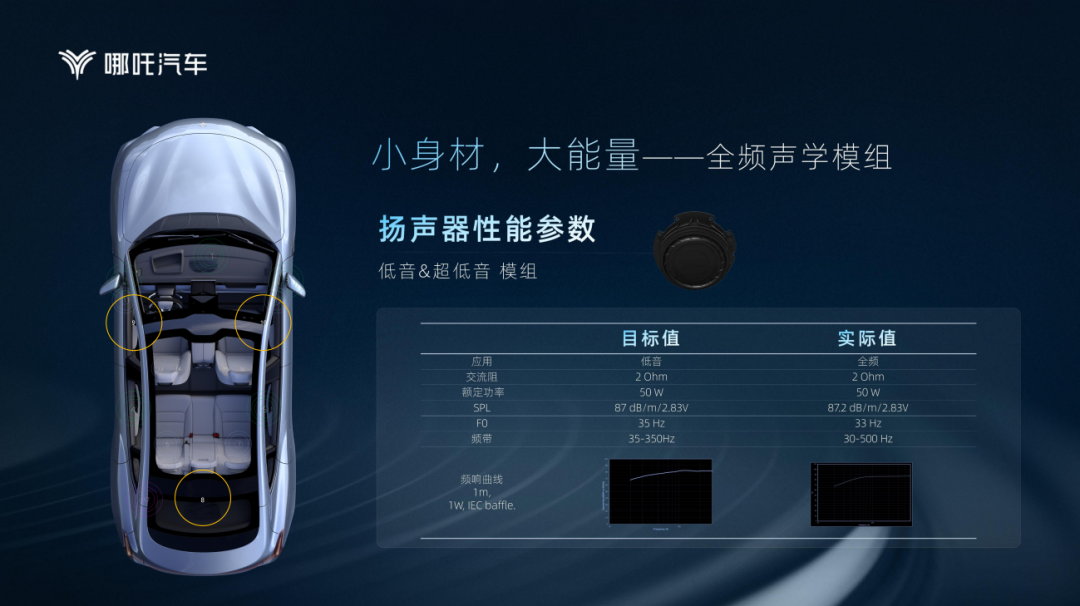
NETA also has some innovations for large-size low-frequency units, namely VFW subwoofer technology, in which VFW is a zero-vibration self-compensating low-frequency system with the greatest feature being the bidirectional radiating diaphragm. Normally, a low-frequency or speaker only has one radiating surface which will cause a reverse problem of vibration noise inside the car. Vibrations will drive the door panel, vehicle body or even the seat to vibrate together and transfer onto every interior pad. Our technology is specifically designed to solve this problem with a double-sided radiating low-frequency system.
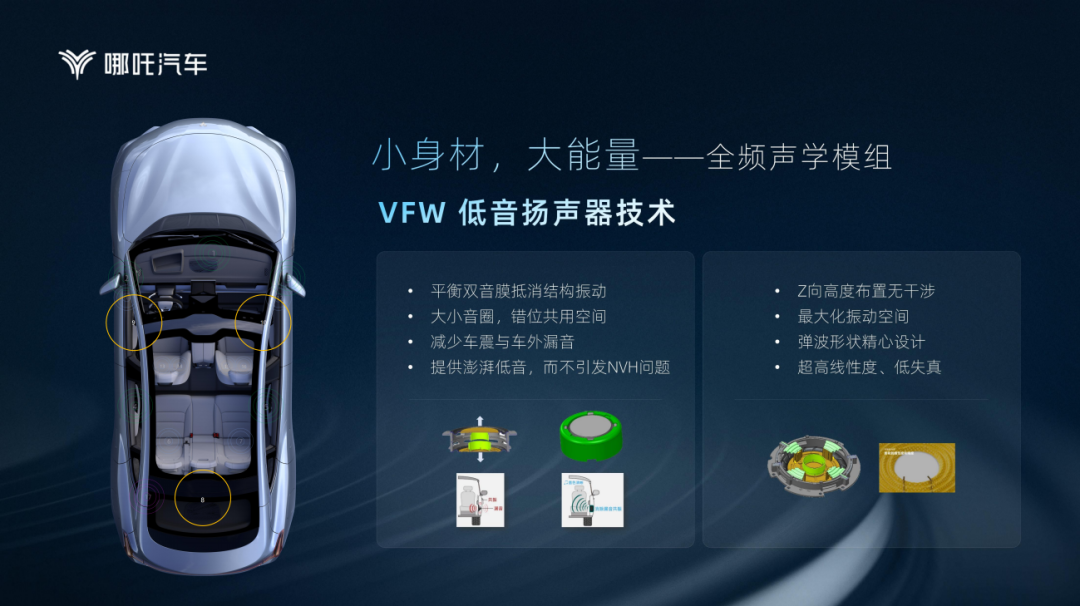
Double-sided radiation is based on the simplest principle of balance of forces. The top diaphragm vibrates upward and the bottom diaphragm vibrates downward. Despite working with large amplitudes and powers, it is still stationary to the outside world without any vibration. In this case, it can produce high-power strong bass and reduce the problem of resonance and noise inside the vehicle.
Hardware is the foundation, while excellent algorithms and software are the soul.
NETA has used many algorithms in this audio system, and these six algorithms are outstanding with unique features:
- SFR sound field reconstruction
- FIR filter
- IRC compensation
- PCor correction
- VSI virtual sound image center technology
- A2Q technology
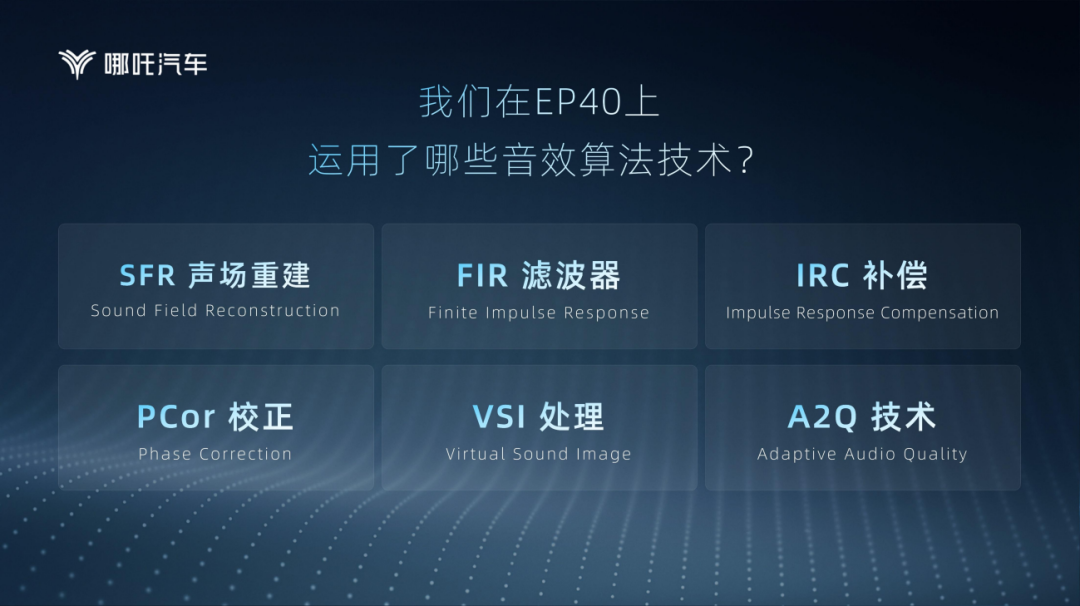
Firstly, SFR sound field reconstruction algorithm is the core algorithm and feature of achieving 720° surround sound. Its working principle is to reconstruct the target area sound field by applying the speakers of each channel in the vehicle, to enhance the width, depth, and breadth of the sound, and achieve 720° surround sound effect inside the vehicle.
The second FIR filter, which is a standard configuration for high-end models. The audio system algorithms, audio data, and software processing of the NETA sound system are all based on FIR filters. The advantage is that it can maintain the phase consistency of each speaker even in the case of many speakers, and the perceptible benefit for users is purer sound and better sound field.
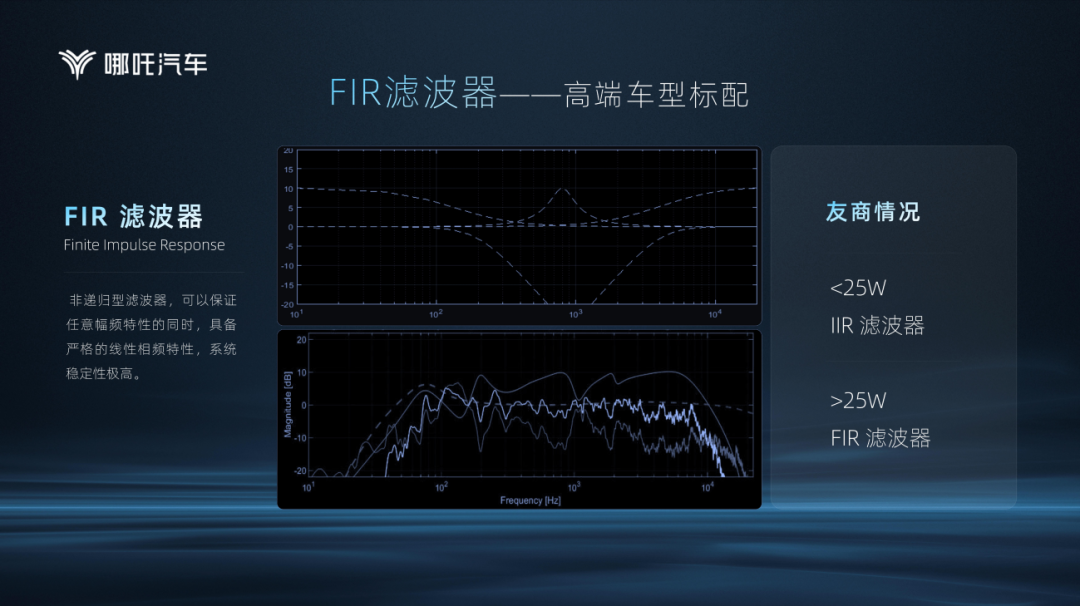
The third technology is transient response compensation, even if my set of hardware systems is perfect, it will still produce some loss of sound quality in harsh or irrational acoustic environments in the car, and this algorithm is used to solve this problem.
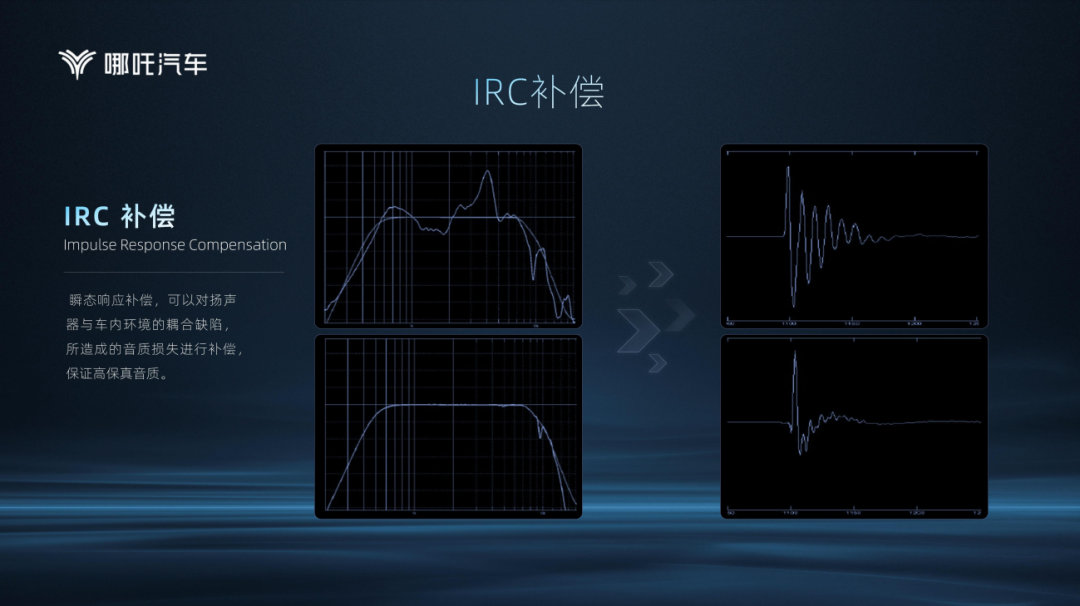
The fourth technology is phase correction technology. This technology is only needed for layouts with multiple speakers, and this “multiple” often refers to 18 or more. Just like the NETA S equipped with 21 speakers, the user can perceive and experience the phase problems brought by each speaker. This technology solves the phase problems of each speaker under different layouts in the car.
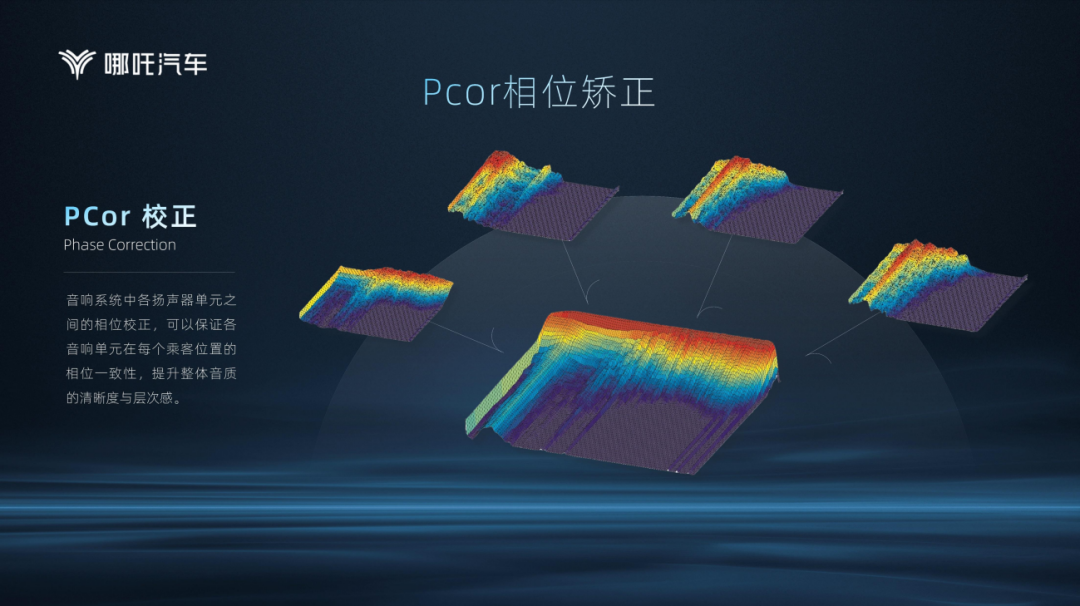
The fifth technology is the algorithm for virtual sound image center. Simply put, this algorithm ensures that no matter where the speaker is located, the user can feel that the sound is coming from the front, which is in line with the general public’s perception of sound.
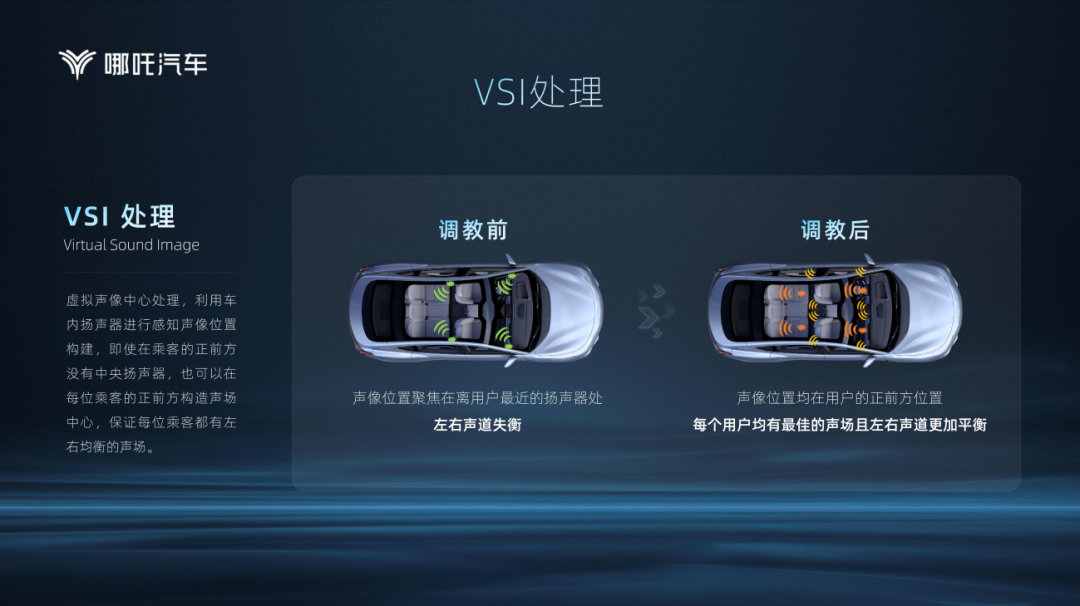
The sixth is A2Q tuning, adaptive sound tuning. NETA S will adaptively adjust the sound effect algorithm or the entire system sound effect parameters based on the vehicle condition, speed, and user-adjusted volume level to provide users with the most suitable sound effect for the current environment and driving mode.
Excellent hardware and software are a must, but it takes good sound tuning to fully unleash their advantages.
The engineers spent more than three months on developing the Ne Zha S sound system, dividing the tuning into three stages, with each stage taking one to two months. During the validation process, they conducted over 1,300 tests to analyze the sound characteristics of each position, and compared the sound quality before and after optimization to ensure the correctness and effectiveness of the sound algorithms and the supported parameters from objective data.
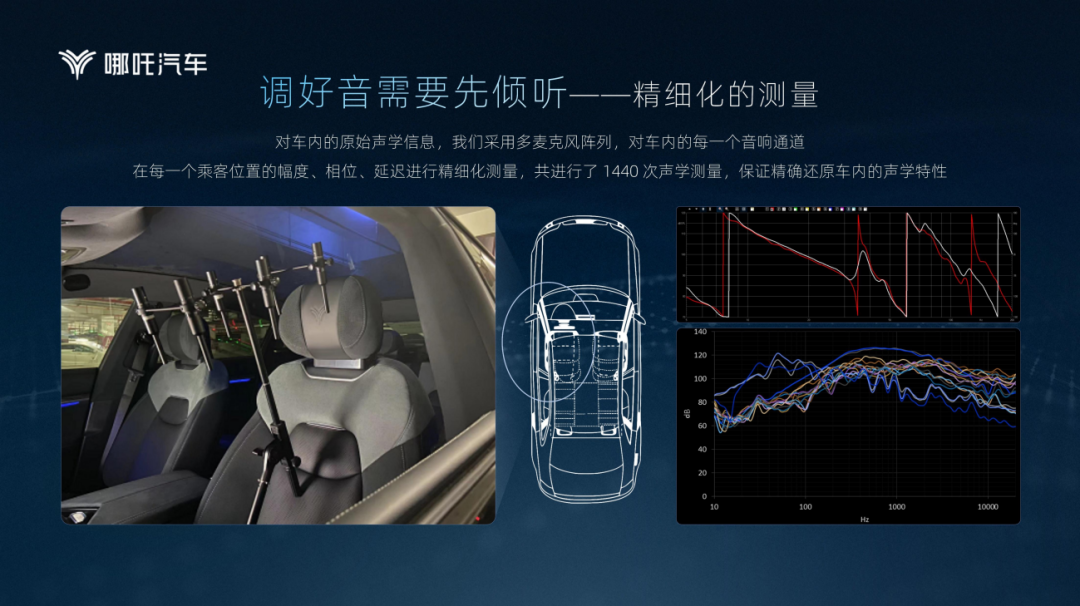
In addition to objective analysis, subjective feelings are also important in evaluating sound. The Ne Zha S has a professional “Golden Ear” team certified by the China Electronics and Acoustics Association to conduct specialized sound tuning. The “Golden Ear” team evaluates the sound system in several dimensions, including tonality, soundstage, distortion, and dynamics. Tuners adjust parameters on every small dimension within each big dimension.
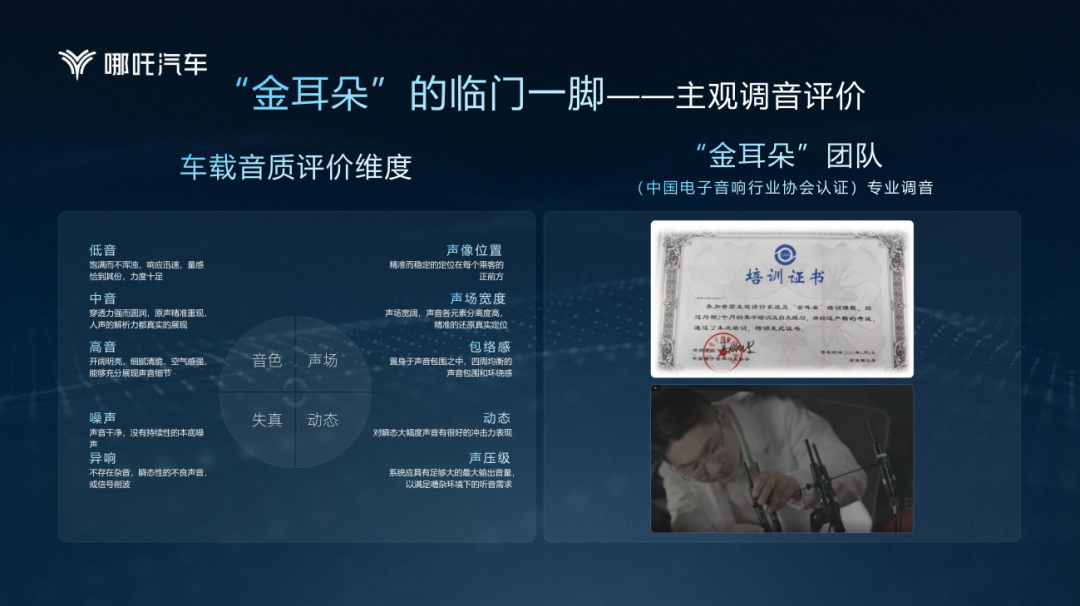
These efforts, together with driving modes including Normal, Driver-exclusive, and Co-driver-exclusive modes, lead to the current sound of Ne Zha S, tailored for all kinds of driving scenarios.

Finally, we’d like to share an actual in-car performance of the Ne Zha S sound system.
-END-
This article is a translation by ChatGPT of a Chinese report from 42HOW. If you have any questions about it, please email bd@42how.com.
